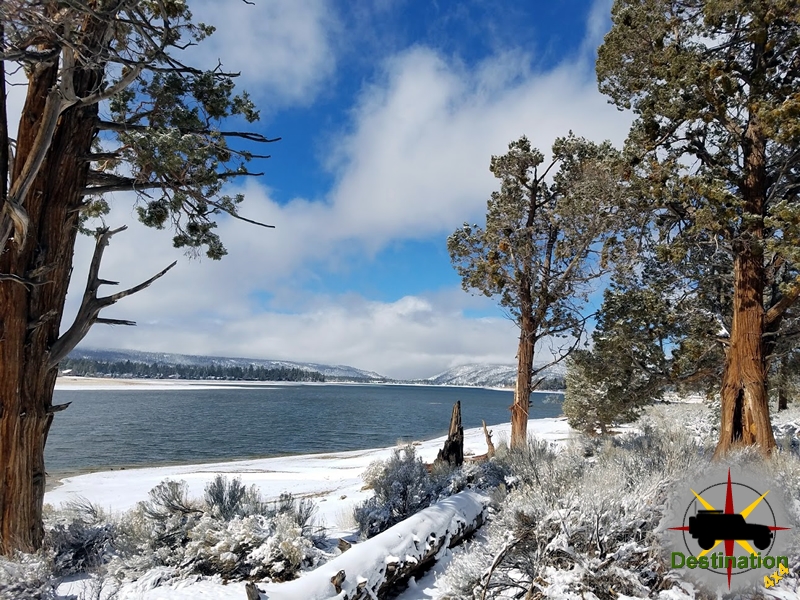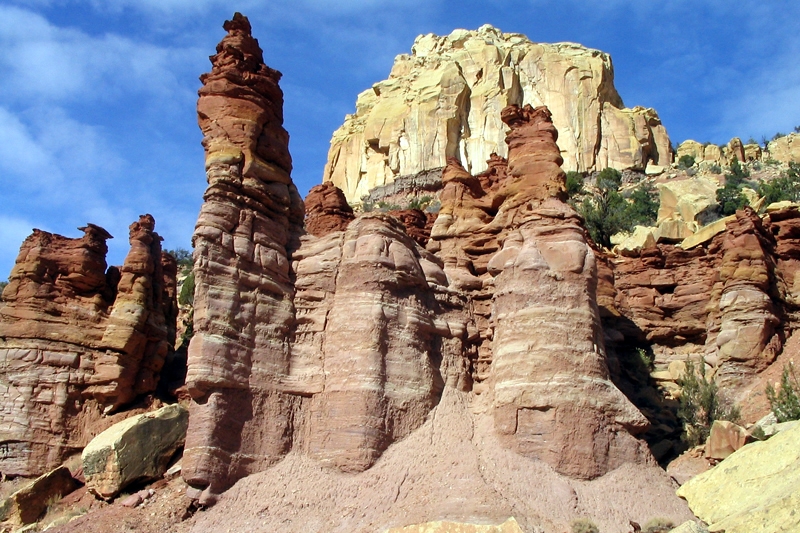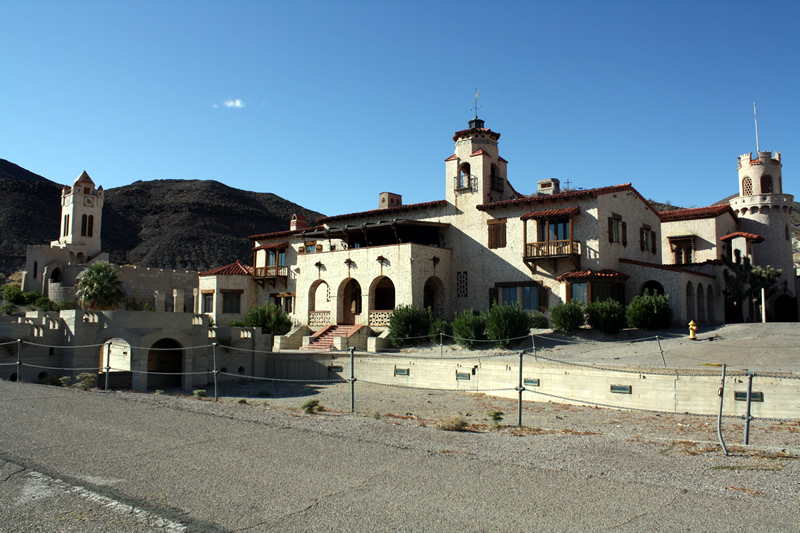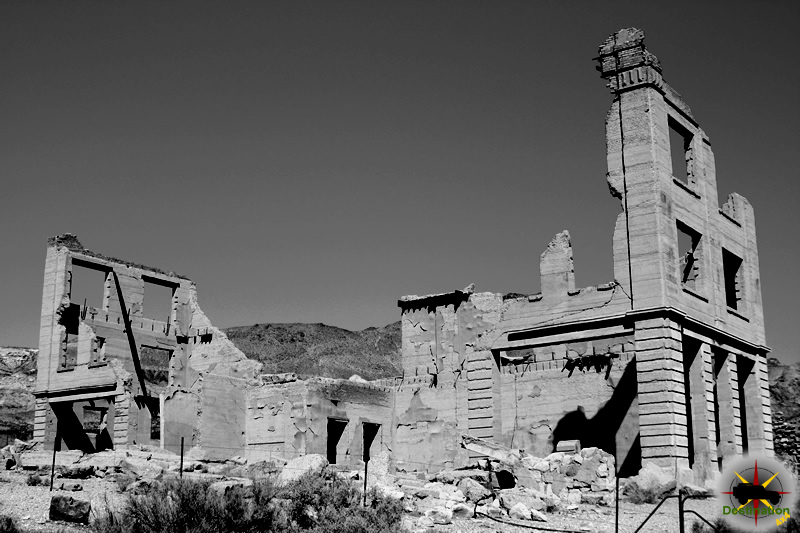
Millville Arizona
Millville Arizona is a ghost town and sister city to Charleston, Arizona located along the San Pedro River, in Cochise County, Arizona. Charleston served as a type of residential community to Millville, while Millville served as a silver ore processing center for the silver mines of Tombstone, Arizona.

Millville is built to process ore from nearby Tombstone, which is located about 9 miles northeast of Charleston. The stamp mills in Millville is owned by Tombstone Mill and Mining Company and Corbin Mill and Mining Company started operations in 1879. Peak operations are from 1881 – 1882 where the mills processed 1.4 million dollars in silver bullion
In 1886 the silver mines in Tombstone flooded with water. The mills in Millville were forced to shut down, and Charleston and Millville went into steep decline. In the 1890’s, Charleston and Millville are abandoned and considered a ghost towns. Charleston was briefly inhabited in the 1890s by a small population of Mexican immigrants who used the remaining wooden structures as firewood.
Millville Town Summary
| Name | Millville, Arizona |
| Location | Cochise County, Arizona |
| Latitude, Longitude | 31.6350, -110.1737 |
| Elevation | 1216 meters / 3990 feet |
| GNIS | |
| Post Office | May 26, 1879 – May 3, 1880 |
Millville Trail Map
Millville is located about 9 miles southwest of Tombstone, Arizona. Charleston and Millville are not accessible by car and can only be reached by hiking up the San Pedro River. The Bureau of Land Management has begun maintaining trails to and from the area.
Refereces
Charleston Arizona
Charleston, Arizona is a ghost town located in Cochise County, Arizona. the town operated from the late 1870’s through the 1880’s. The town is founded as a sister city of Millville, Arizona, which is located just across the San Pedro River. Charleston served as a type of residential community to Millville.

Millville, and later Charleston, is built to process ore from nearby Tombstone, which is located about 9 miles northeast of Charleston. The stamp mills in Millville is owned by Tombstone Mill and Mining Company and Corbin Mill and Mining Company started operations in 1879. Peak operations are from 1881 – 1882 where the mills processed 1.4 million dollars in silver bullion.

At its peak, Charleston suffered a nasty reputation of a rough and tumble town. Following the notorious gunfight in Tombstone, Charleston which claimed the Clantons, the McLaurys, Johnny Ringo, “Curly Bill” Brocius, Pete Spence and Frank Stillwell, as citizens, it is no wonder the town is found guilty by association. In Charleston, Frank Stillwell was the previous owner of the J.W. Swart saloon prior to selling in 1881. The bulk of the these men are under the employment of the Clanton’s Ranch. On May 6, 1882, The Tombstone Epitaph reported on Charleston that the town is “well regulated and free from turmoil” and “one of the most peaceful places we were ever in.”
In 1886 the silver mines in Tombstone flooded with water. The mills in Millville were forced to shut down, and Charleston and Millville went into steep decline. In the 1890’s, Charleston is abandoned and considered a ghost town. Charleston was briefly inhabited in the 1890s by a small population of Mexican immigrants who used the remaining wooden structures as firewood.
Charleston Town Summary
| Name | Charleston, Arizona |
| Location | Cochise County, Arizona |
| Also Known As | Charleston Station |
| Latitude, Longitude | 31.6358, -110.1725 |
| Elevation | 1216 meters / 3990 feet |
| GNIS | 24360 |
| Population | 400 |
| Post Office | April 17, 1879 – October 24, 1888 |
Charleston Trail Map
Charleston is located about 9 miles southwest of Tombstone, Arizona. Charleston and Millville are not accessible by car and can only be reached by hiking up the San Pedro River. The Bureau of Land Management has begun maintaining trails to and from the area.
Charleston Arizona Persons of Interest
 Joseph Isaac ClantonJoseph Isaac Clanton, commonly knows as "Ike" Clanton was a notable figure in the American Old West, primarily recognized for his involvement in the notorious… |
 Newman Haynes ClantonNewman Haynes Clanton was a central figure in the tumultuous period of the American frontier, representing the complex interplay of law, crime, and social dynamics… |
 Robert Findley McLauryThe only known portrait photo of Frank McLaury of Tombstone. Robert Findley McLaury, known as Frank McLaury (1857–1881) was a notable figure in the American… |
 Thomas McLauryThomas McLaury of Tombstone in 1879 Tom McLaury, born as Thomas McLaury, was a key figure in the tumultuous environment of the American frontier during… |
References
Johannes Henricus “Henry” Wickenburg
Henry Wickenburg was a pioneering figure in the American mining industry during the mid-19th century. Known for his role in discovering the Vulture Mine, one of the richest gold mines in Arizona, Wickenburg’s tenacity, and entrepreneurial spirit left an indelible mark on the development of the region and a town which bears his name.

Early Life and Background
Henry Wickenburg was born on November 21, 1819, in the town of Crefeld, Prussia, in what is now Germany. Crefeld is known for coal mines, and he and his brother worked these mines as children. Following the reclamation of the families minueral rights on their land by the Prussian Government, In 1847, Henry Wickenburg arrived in the United States and settled in California during the height of the Gold Rush. He immediately recognized the potential for wealth and decided to try his luck in the goldfields. Wickenburg spent several years working as a miner, gaining experience and honing his skills in prospecting.
The Discovery of the Vulture Mine

In 1862, Henry Wickenburg embarked on a journey that would change his life and the future of Arizona. He led an expedition into the Arizona Territory, hoping to find gold and silver deposits. It was during this expedition that Wickenburg stumbled upon what would later be known as the Vulture Mine, situated in the harsh and rugged terrain of the Vulture Mountains.
The Vulture Mine turned out to be an extraordinary find, with vast deposits of gold. Wickenburg quickly recognized its potential and staked his claim, sparking a gold rush in the region. His discovery attracted prospectors from far and wide, leading to the establishment of the town that would later bear his name, Wickenburg, as a center of mining activity.
Establishing and operating the Vulture Mine was not without its challenges. Wickenburg faced numerous obstacles, including hostile Native American tribes, harsh living conditions, and technical difficulties in extracting the gold. However, his determination and resourcefulness allowed him to overcome these hurdles and develop the mine into a prosperous operation.
The Vulture mine is named “the largest and richest gold in in Arizona.” In 1866, Wickenburg sold 80% interest in the mine the the sum of $85,000.00. A down payment is made in the amount of $20,000 with the balance being maintained with a promissory note. Following the sale, Wickenburg relocated and started a ranch near another town which bears his name.
The Vulture Mine suffered repeated problems caused by its remote location, poor financial standing and mismanagement. Despite being the largest gold mine in the territory, a title dispute caused Henry to be unable to collect on the promissory note.
On May 14th, 1905, Henry Wickenburg is found dead of the gun shot wound to the head. A coroners report ruled the death a suicide and that Henry “had melancholy due to old age”.
References
Vulture City Arizona

Subscribe to continue reading
Subscribe to get access to the rest of this post and other subscriber-only content.
Tip Top Arizona
Founded in 1876, Tip Top Arizona is a old Silver Mining town and ghost town located in Yavapai County, Arizona. The town site is located west of Black Canyon City, in the southern foothills of the Bradshaw Mountains.

In the late 1870s, gold and silver were discovered in the Bradshaw Mountains, attracting prospectors and miners seeking their fortune. In 1876, the Tip Top Mining District was established by two men, Jack Moore and Bill Corning, and the town of Tip Top sprung up around it. Initially, nearby Gillett served as the milling town.
The district quickly gained a reputation for its rich ore deposits and attracted significant investment and development. The first mining claims were staked, and a stamp mill was constructed to process the ores. With the arrival of the railroad in nearby Phoenix, Tip Top saw an influx of miners, merchants, and entrepreneurs, leading to its rapid growth. A Post Office is established on August 12, 1880
During the boom times, Tip Top boasted six saloons, a brewery, two restaurants, a Chinese laundry, a feed yard, a blacksmith shop, a shoe store, and many residences. The Post Office is closed February 14, 1895.

During is heyday, the silver mines of Tip Top produced over $4,000,000 from its ore deposits.
Town Summary
| Name | Tip Top, Arizona |
| Location | Yavapai County, Arizona |
| Latitude, Longitude | 34.0508662, -112.2468296 |
| Elevation | 765 meters / 2510 feet |
| GNIS | 1669455 |
| Population | 1200 |
| Post Office | August 12, 1880 – February 14, 1895 |
Trail Map
According to Dangerous Roads the trail into Tip Top Arizona is closed and and the area is undergoing land changes. Other resources state that the road was closed in 2009.



